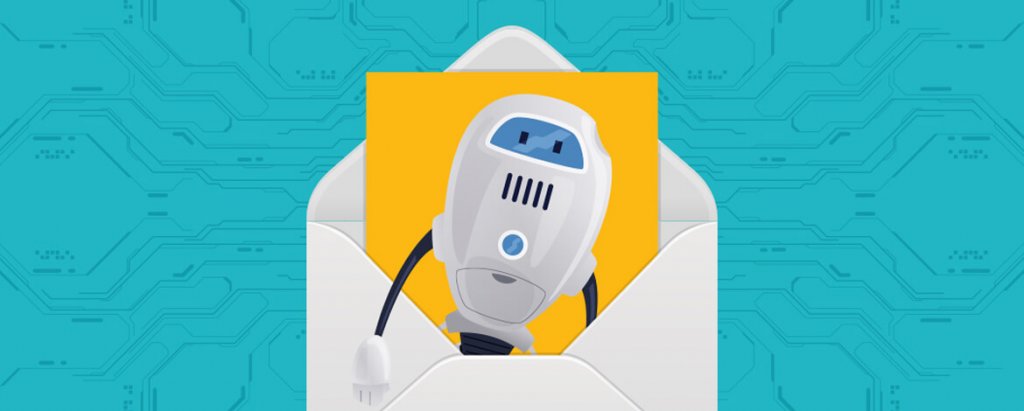Marketing automation is a next-generation, CRM-related tool for increasing lead conversions and improving forecasting and customer segmentation. It is said to be the most transformative advancement in sales and marketing since the emergence of CRM. It not only gives us the opportunity to send personalized communication to every user but also saves time of sending manual messages. Recent studies have shown that marketing automation brings up to 14.5% increase in sales productivity and 12.2% reduction in marketing overhead. This holds true even for email marketing.
Automation in email marketing has facilitated the email marketers to send timely and relevant emails to the subscribers based on their activity without the need to do it manually. However, your automated emails should have a human touch so that they do not seem bot-generated emails.
Here are some simple and actionable tips to humanize your automated emails.
Decide a credible sender name
The sender name of automated emails should build credibility and be trustworthy for the subscriber. Noreply From name should be strictly avoided.
Take a look at the example by Social Media Examiner. It makes the subscriber feel that the founder of the company has personally taken the time to email them.
Use language similar to a one-to-one email
Your email copy should reflect that it is written by an individual who understands the subscriber’s needs. It should be written in a language that the subscriber can most relate to. More often than not, automated emails are written in a formal or salesy language that fails to appeal to the readers. Ultimately, it ends up being an ineffective sales pitch that yields no results. To make sure that your automated emails are as effective as manually sent emails, you should draft emails that sound like a conversation rather than a “Buy our product” speech.
Harvard Business Review shares valuable insights into the kind of language that should be used.
Never forget to add context to the email
Many a time, marketers miss out on including context to the automated emails. Such emails come off as a vague communication that the prospect is not expecting. Obviously, the email recipient will avoid taking action on an email that does not have a clear purpose.
Take a look at the example below. The word “this” in the follow-up email gives the impression that the email is sent by a bot. The email is not able to establish a link with the previous communication.
Source: Yesware
As an implication, you must always create relevance in all your emails and follow up on the same thread as the initial message. Try to recapitulate the previous interaction in brief so that the subscriber is able to connect with the email.
Personalize the emails in the right way
Go beyond first-name personalization and draft tailormade emails in line with the subscriber’s activity. You can carry out customer profiling to figure out how they prefer to be addressed.
Take a look at the example below. It is strongly recommended that the marketer takes time to research and personalize with the right name.
Source: Yesware
Personalized automated emails usually mean that you have set custom fields in the ESP and these details are automatically fetched in individual emails. You should see to it that the correct information is fetched.
Look at the example below.
Source: Yesware
It is an email marketing blunder that makes it quite evident that it is an automated email sent by a bot. Such mistakes can be easily prevented by being extra careful and testing the automation workflow once it is set. These emails would mitigate the conversion rate as the prospects will not be compliant enough to take action or respond to them.
Send appropriate follow-up emails
Many a time, it is observed that you get multiple salesy emails from different people working at the same company. Obviously, it is not a pleasant experience for the recipient. For example, if you keep receiving reminder emails for the payment of your phone bills, it would get quite annoying.
Here’s another example.
Source: Yesware
The subscriber has received this automated email asking to schedule a call after already having one. Moreover, the email opens with an unnecessary company introduction. It does not talk about the last call that the company had, which makes the email totally in vain.
Have appropriate time interval between the automated emails
Quite often, marketers overwhelm the subscribers with too many automated emails at one go. This is not a good practice as it can lead to unsubscribes and getting your emails marked as spam. Maintain an appropriate time interval between the automated emails and make sure that they bear relevance with each other and the subscriber’s activity.
Allow room for human intervention at the right time
Automation does not replace human intervention. Although bots have made things easy for the email marketer, it is highly recommended that you make way for human intervention at the right time and facilitate more effective communication. Not everything can be conveyed in the right way through automated emails.
Wrapping Up
Keep humanity alive in your email automation and create a better email experience for the subscribers. Instead of sending generic emails targeted to a wide range of population, use humanized automation to deliver value with personalized messages.
